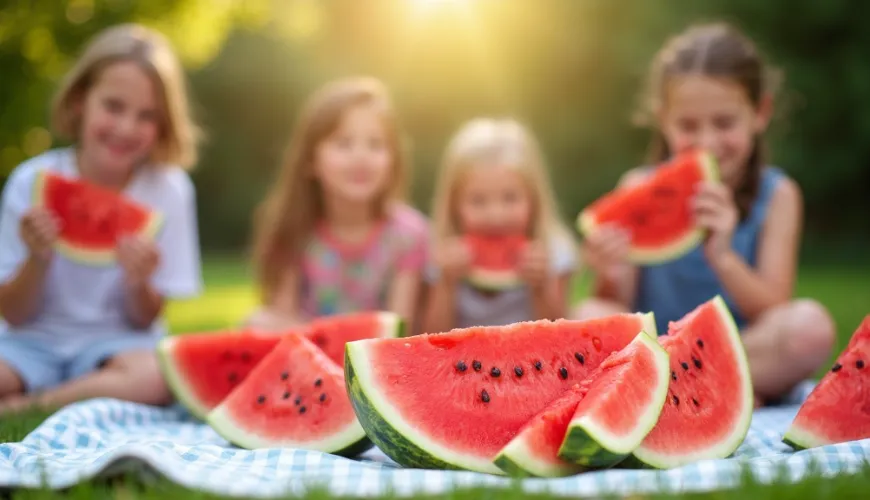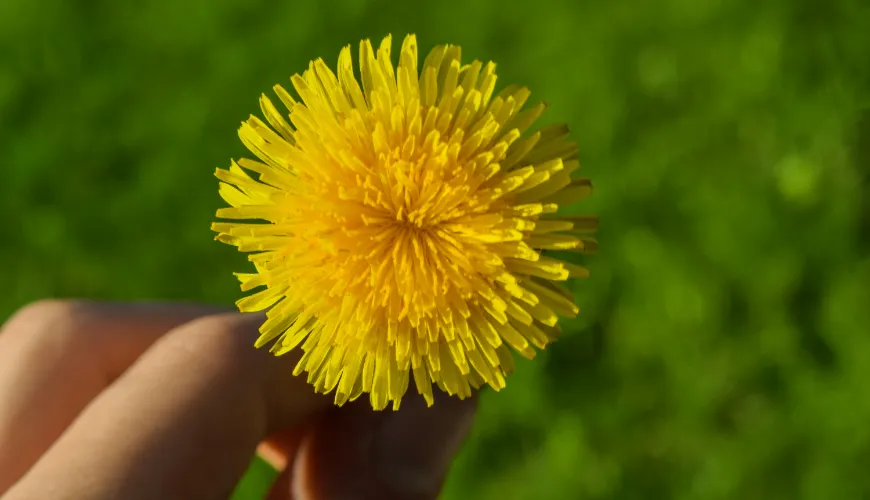
How to Choose a Watermelon to Truly Enjoy Its Sweet Taste

How to Choose the Best Watermelon - Tips to Save You Disappointment and Money
Summer season without watermelon? It’s hard to imagine. A hot day, a refreshing slice of chilled watermelon, and the feeling that summer has truly arrived. But who hasn’t encountered a watery, bland, or unripe watermelon at some point? Choosing the right one can feel like a lottery – unless you know a few well-working tricks. Learning how to pick a good watermelon isn’t magic, but a combination of observation, touch, and a bit of experience.
In stores and markets, watermelons all look the same. Shiny, hard, beautifully red in promotional photos. But the reality? Sometimes you encounter one that tastes like soggy paper. And since you usually buy a whole watermelon, a bad choice can mean disappointment for the whole family. The good news is that there are reliable signs to identify how to pick a ripe watermelon, one that will be sweet, juicy, and fragrant – exactly what you envision.
Color and Spot - The First Clue to a Ripe Fruit
Let's start with the most important – the color. It’s not about the depth of the green skin, although that plays a role, but primarily about the field spot – a light patch on one side of the watermelon, where it lay on the ground. This spot should be yellow to buttery cream. If it’s white or missing altogether, the watermelon likely wasn’t on the field long enough and didn’t have time to ripen. And that’s a problem – because watermelons do not ripen after being harvested, so what you bring home is what you get.
Besides the spot, pay attention to the color of the rind itself. A ripe watermelon has a dark green rind with clearly visible stripes, and if it’s the so-called tiger type, the contrast between the lighter and darker parts should be pronounced. A matte rind is another plus – a too shiny watermelon might still be unripe.
Tap It – Sound Like a Metronome
It might sound like an old wives’ tale, but tapping a watermelon is one of the most reliable indicators. When you tap a ripe watermelon, it should produce a deep, hollow sound – like tapping on a wooden drum. If the sound is more muted or high-pitched, the watermelon might be either overripe (and thus mealy) or, on the contrary, unripe.
Experienced sellers at markets will gladly tap it for you – and if their palm vibrates while doing so and they immediately recommend it, it's often a good sign. Sure, it might resemble shamanism a bit, but practice makes perfect. Tapping is a reliable indicator of what’s happening inside without having to cut the watermelon open.
Shape, Stem, and Weight – More Clues to a Sweet Center
Shape matters too. An irregularly shaped watermelon can result from uneven growth due to a lack of water or nutrients. This doesn’t necessarily mean it won’t taste good, but a round, symmetrical shape is usually a sign of balanced nutrition and thus better taste. A heavier watermelon is often juicier – take two of the same size and see which one weighs more. The denser one will probably be fuller of water and sweeter.
If the watermelon has a stem, you can find out more. A dried and twisted stem indicates the watermelon was harvested at full ripeness. A green or fresh stem, on the other hand, suggests it was picked prematurely – and that's almost a death sentence for a watermelon. As previously mentioned, watermelons do not ripen after being harvested, so even if it sits at your home for a week, it won’t get sweeter.
Watermelon Gender - Urban Legend or Truth?
You might have heard that there are "male" and "female" watermelons. The female ones are said to be rounder, sweeter, and have fewer seeds, while the male ones are bigger, more elongated, and watery. This tip isn’t scientifically proven, but many experienced growers and customers swear by it. In fact, rounder watermelons often tend to be sweeter – perhaps that’s why this belief has endured through generations.
How to Choose a Good Watermelon Without Cutting It
Every year at the market in České Budějovice, Mr. Jiří sells watermelons at a stall, claiming that "if a watermelon smells through the rind, you've won." He invites customers to bring the watermelon to their noses and indeed – if it’s ripe, you can smell a faint sweet scent through its skin, like opening a jar of watermelon jam.
One customer, Mrs. Alena, picked a watermelon this way, which turned out to be an absolute treasure at home. Sweet, juicy, without a fibrous structure, and with minimal seeds. Exactly the kind for which it's worth carrying home a five-kilogram chunk.
Organic or Conventional? And What About Seedless Watermelon?
Nowadays, it’s increasingly common to choose organic watermelons. They are slightly more expensive, but often come from smaller farms where emphasis is placed on natural ripening and fewer chemical interventions. Organic watermelons also tend to have thinner rinds, which is an advantage when consuming and also means less environmental burden when disposing of waste.
Seedless watermelons are practical, but they don’t always taste as sweet as the classic ones. They are often bred to remain sterile, which can affect their structure and flavor. So if you’re looking for a truly intense watermelon flavor, opt for the seeded original.
And what to do if you’ve brought home an unripe watermelon? Unfortunately, there are not many options. Unlike bananas or avocados, a watermelon cannot "ripen" in a paper bag or in the sun. The only thing you might try is using it in smoothies or cold soups where you add other sweet fruits.
Choosing the right watermelon isn’t a science, but an art. When you learn to read the signs a watermelon offers, it will reward you with a refreshing treat that’s worth it. Whether you’re shopping at the market, in a supermarket, or directly from a farmer, next time you’ll know how to pick the right one. Because a good watermelon is not just about luck – it’s about attention.

